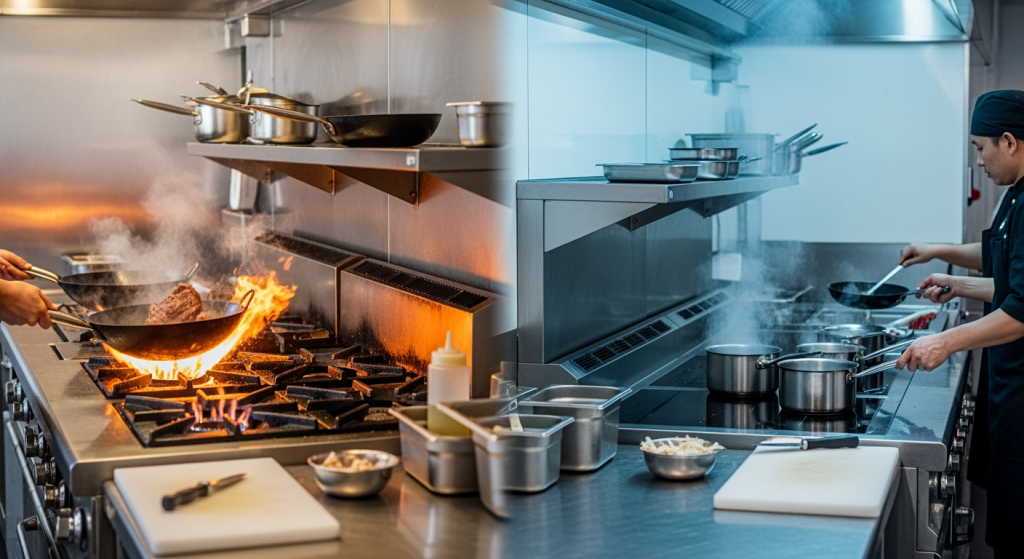
You don’t really notice your kitchen equipment until something doesn’t heat right. Then suddenly the whole day’s off-balance. I’ve worked in spots where the ovens had minds of their own, burners hissed louder than the hood fan, and the toaster might as well have been a sun lamp.
The core question that keeps circling around your kitchen equipment: electric kitchen equipment or gas kitchen equipment – which side are you on?
You’ll hear both camps yelling across the prep table. But the answer? It’s not simple. It depends on your layout, your crew, your food, and your patience level.
What Makes Electric Worth It
Electric’s gotten better. Much better. I’ve used electric commercial kitchen equipment that holds heat tighter than gas and doesn’t flare up when grease hits the wrong spot.
Why electric gets the job done:
- You get cleaner lines and less clutter – no gas lines to trip over
- It’s easier to control heat when precision matters
- Feels safer in small setups or for newer cooks still learning the flow
There’s something to be said for how smooth electric cooking equipment runs. No hissing. No flickering pilot lights. Just heat when you need it, exactly how you dialed it in.
The Loyalty to Gas Is Real
But here’s the flip side: gas is familiar. A gas burner tells you stories. The flame talks back. There’s something satisfying about cranking it up and seeing the fire react right away.
Why cooking gas equipment still wins over hearts:
- You get instant, visible heat – no guessing
- It reacts fast when things start moving too quickly
- Built to take a pounding during a brutal service window
Every time I use kitchen gas equipment, I know what to expect. There’s a rawness to it – no middleman between you and the fire.
But don’t forget the cleanup. The soot, the smell, the grease that collects behind and under. Gas needs attention. It needs airflow. It needs respect. You ignore a leak once, and you’ll never ignore it again.
You Can Mix, You Should Mix
There’s no rule that says pick one and stick with it. I’ve seen solid kitchens blend small electrical kitchen equipment with heavy-duty gas lines, and the result is smooth.
Best setups balance both:
- Use electric where steadiness counts – ovens, warmers, fryers
- Keep gas for high-heat jobs – woks, grills, fast-sauté stations
- Lean into what your kitchen does best and choose gear to match that pace
If you’re cooking delicate pastries and roasted veg all day, maybe gas doesn’t help much. But if you’re throwing out charred meats, open flames are your best friend.
Before You Pick a Side
Think through the details. What’s your service like? How’s your staff moving around the space? Can your place even handle extra ventilation if you go gas-heavy?
It’s not about trends. It’s about the way your kitchen breathes.
The question isn’t “what’s better.” It’s “what works for us without burning the budget or the crew.”
Because if your electric cooking equipment can’t keep up, or your gas kitchen equipment makes the line feel like a furnace – you picked wrong. Doesn’t matter how shiny it looked in the catalog.
Last Thought Before You Call a Dealer
I’ve burned food on both. I’ve cursed at both. And I’ve made great dishes using both. The gear doesn’t make the food – you do. But having the right gear makes you faster, calmer, and less likely to snap mid-service.
Pick smart. Not loud. Let the food decide what heat it needs. Then build your kitchen to deliver that without making the crew miserable.
And always keep a backup toaster. Trust me.